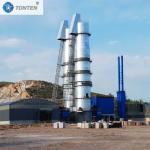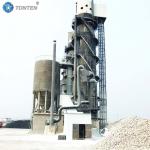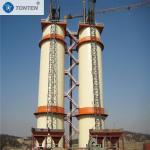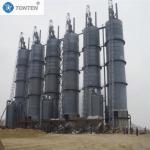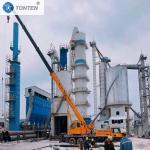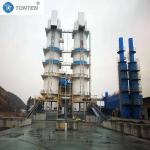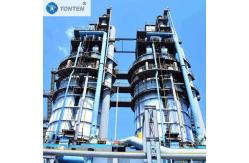Dolomite Magnesia Vertical Shaft Kiln Calcination Lime Cement Kiln
Product introduction:
Vertical kiln refers to thermal equipment that continuously
calcines clinker by top feeding and bottom discharging. It consists
of a kiln body, feeding and discharging devices, ventilation
equipment, etc. Vertical kiln is widely used to calcine various
refractory materials and lime. Vertical kiln is a modern lime kiln
with environmental protection, energy-saving functions, and a high
degree of mechanization and automation. By using modern technology,
we can make full use of cheap energy, especially gases that were
originally polluting the environment (such as converter gas, blast
furnace gas, calcium carbide furnace tail gas, etc.) as the main
energy source, turning waste into treasure. The vertical kiln is a
cylindrical kiln body. The materials are added from the top of the
kiln and discharged from the bottom of the kiln after calcination.
Because the vertical kiln is arranged vertically, the feeding
adopts a single bucket elevator arranged at a large angle, and the
functional areas are compactly arranged to reduce the floor space.
Advantages:
1. The kiln body steel structure has fewer machined parts and lower
processing costs; installation is not difficult, the refractory
masonry is easy, and investment is small.
2. The fuel adaptability is wide; the mixed-firing kiln use lump
coal and coke; the gas-firing kiln can use high-calorific value
fuels such as natural gas, coke oven gas, and petroleum gas, and
can also use low-calorific value fuels such as converter gas, blast
furnace gas, calcium carbide furnace tail gas, semi-coke gas, and
generator gas; the oil-firing kiln can use heavy oil, diesel and
other liquid fuels.
3. Kiln skin is built vertically with four layers of refractory
materials, which has good insulation effect. The kiln skin
temperature can be controlled to be higher than ambient
temperature, which saves energy significantly.
4. Refractory material has long service life. The material does not
directly collide with refractory material on the working surface,
but relies on gravity sedimentation and friction with the working
surface; this reduces the wear rate of refractory material.
Specification:
Capacity(t/d) | 50 | 100 | 150 | 200 | 300 | 400 |
Distributor | TL-1 | TL-2 | TL-2 | TL-3 | TL-3 | BL-4V |
Vertical kiln | 60m³ | 150m³ | 200m³ | 250m³ | 400m³ | 500m³ |
Kiln chamber cross section | Round |
Ash machine | TF-1 | TF-2 | TF-2 | TF-3 | TF-4 | WF-5 |
Calcination temperature /℃ | 1100±50 |
Energy consumption index /kCal/kg | 950±50 |
Power consumption index /kW·h/t 石灰 | 25±5 |
Limestone : Lime | 1.6~1.75:1 |
Lime overburning rate /% | ≤13 |
